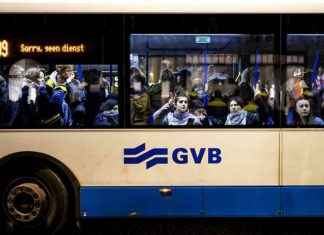Three words chanted by the crowd. Inscribed on the placards, sometimes on faces, even on the slogan “Black Lives Matter” (“The lives of black matter” or “the life of The black account”) was everywhere in the Tuesday, June 2, at the rallies organized in the memory of Adama Traore – a young black man of 24 years died in July 2019, two hours after his arrest. Rallies that echo the challenge of the historic course in the United States, after the murder of George Floyd in Minneapolis, an African-American, was asphyxiated by a white policeman. Rallying cry, movement, movement… where does the slogan “Black Lives Matter” (BLM) ?
read also : In Minneapolis, the protest has been politise
At the origin, it is a hashtag used on social networks and imagined by three activists black. On July 13, 2013, Alicia Garza, a writer and activist, learns the acquittal of George Zimmerman, who shot Trayvon Martin, an African-American 17-year-old. Under the blow of emotion, she writes a ticket of mood, and address a message : “Black People. I love you. I love us. Our lives matter” (“black People. I love you. I love us. Our lives count”). The artist and activist Patrisse Khan-Cullors he then responds : “Black Lives Matter”. The trio will then be complemented by Opal Tometi, writer, american-nigerian, who will bring his experience of the social movements to try to structure the movement that is emerging.
A turning point in 2014 after the deaths of Eric Garner and Michael Brown
The movement takes on a larger scale in 2014, after the death of Eric Garner, choked in New York by a police officer, and Michael Brown, a black teenager, 18-year-old, unarmed, shot dead by a white policeman in Ferguson, Missouri. The network “Black Lives Matter”, until then an online platform, began to organize demonstrations to denounce the racism of the police forces in the us. The first will be held in August 2014 in Ferguson. Will be watching many demonstrations, “die-in” with activists lying on the ground, but also more radical actions such as the occupation of shopping centres or even the blocking of roads or rail. The movement advocates, however, non-violent actions.
new slogans will also shatter the gatherings, including “I can’t Breathe” (“I can’t breathe”), still used today to denounce the death of George Floyd. He was born into reality in 2014, after the death of Eric Garner. The latter, aged 44, was arrested by two plain-clothes police officers accusing it of illegally selling cigarettes, a crime for which he has already been arrested. He is ordered to put his hands in the back, what he refuses while lifting up his arms showing that he is not armed. One of the cops grabs him by the neck and the floor plate so that the key bottlenecks are prohibited since 1993 in New York. Eric Garner repeated eleven times “I can’t breathe,” before losing consciousness. He died at the hospital. Six years later, George Floyd will use the same words to try to alert the police put pressure on his neck with his knee.
“BLM has become a mass movement which is expressed only on the social networks, says Dewey Clayton, a political scientist at the university of Louisville. Even if social networks allow him always to mobilize.” No leader does actually, but several activists share the management of twenty more local entities. “It is rather a sphere of influence, a set of positions in which a lot of people will recognize, but it is not a group or party because there is no figure, a leader, or a real structure, is Nicole Bacharan, historian and political scientist specializing in the United States. It is a rallying cry, a slogan that is just touched. Picked up by sports stars, it takes on a special resonance after the death of George Floyd”.
SEE ALSO George Floyd: the moving tribute to his relatives in Minneapolis






